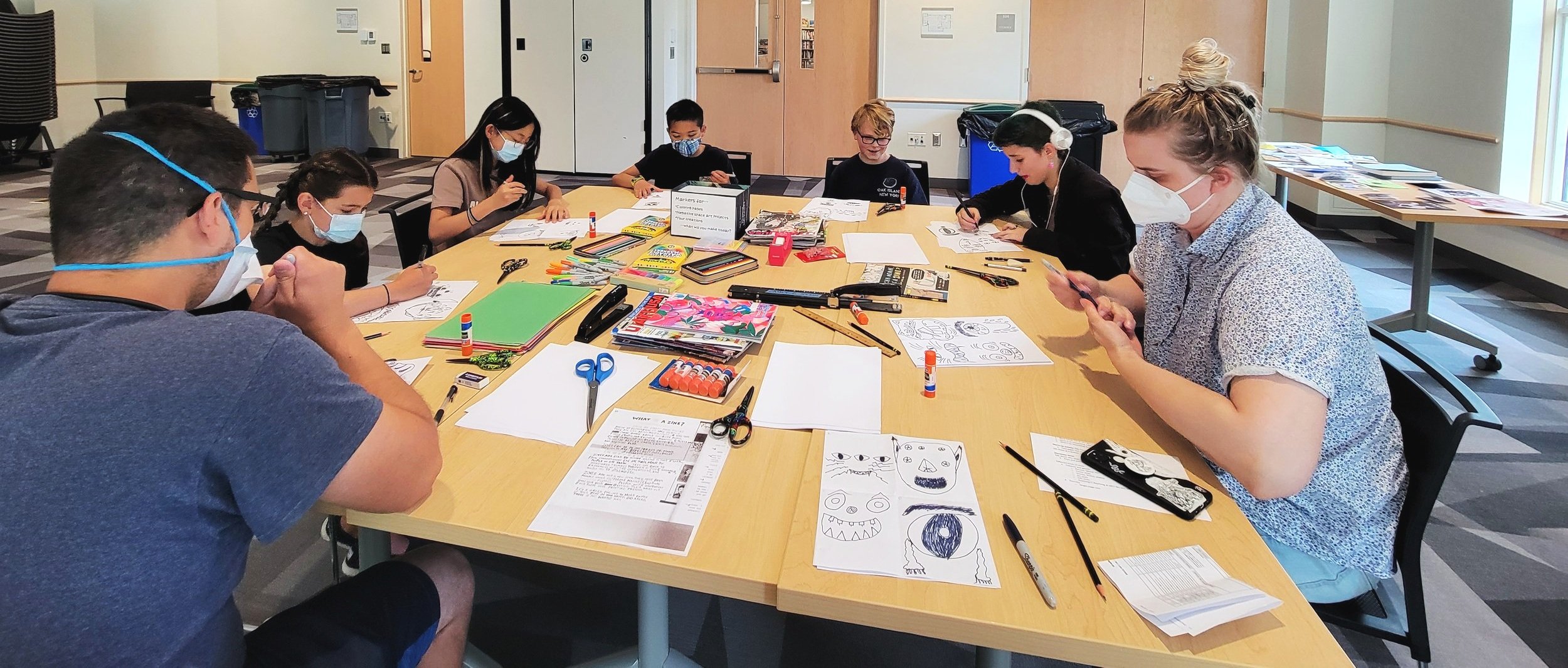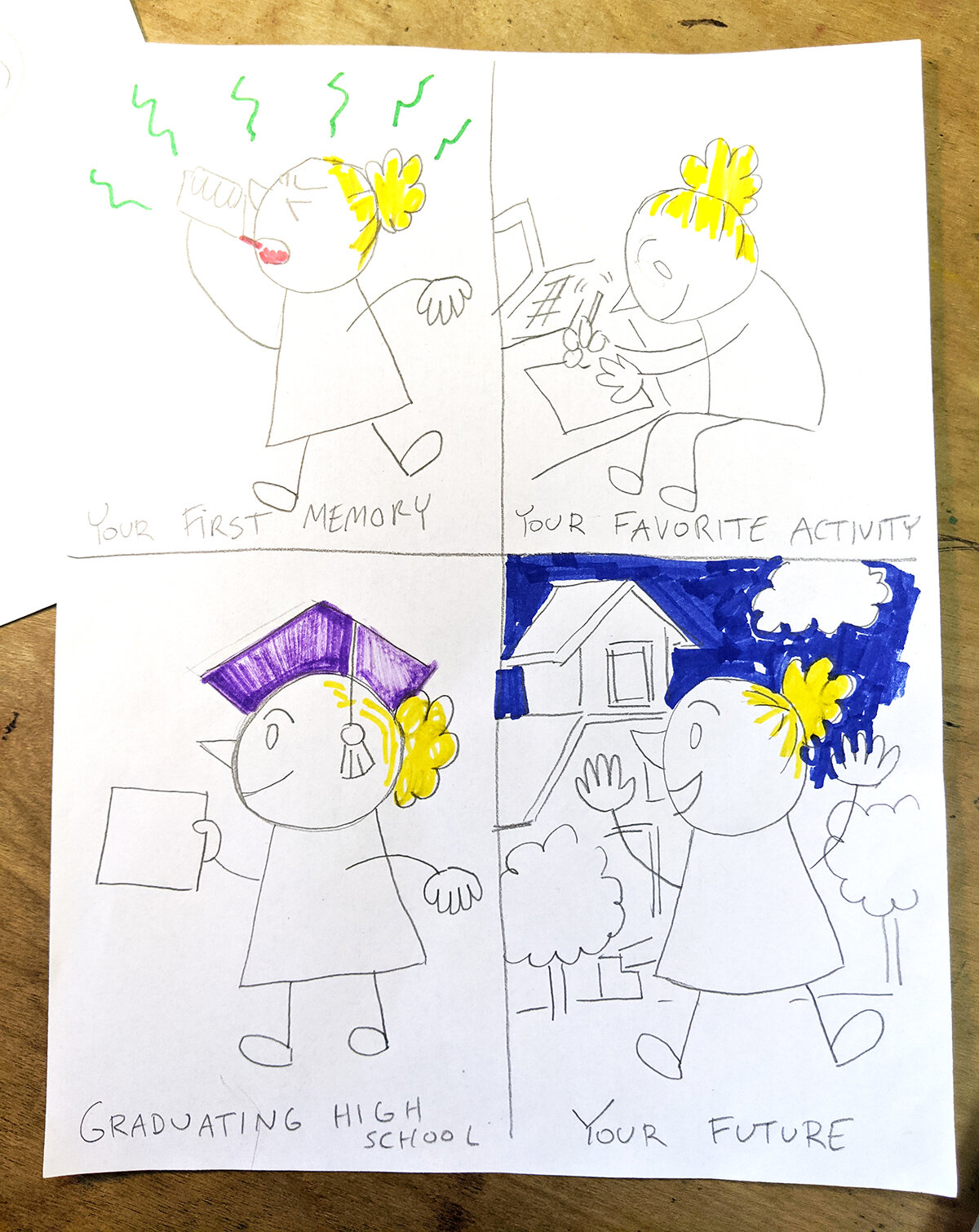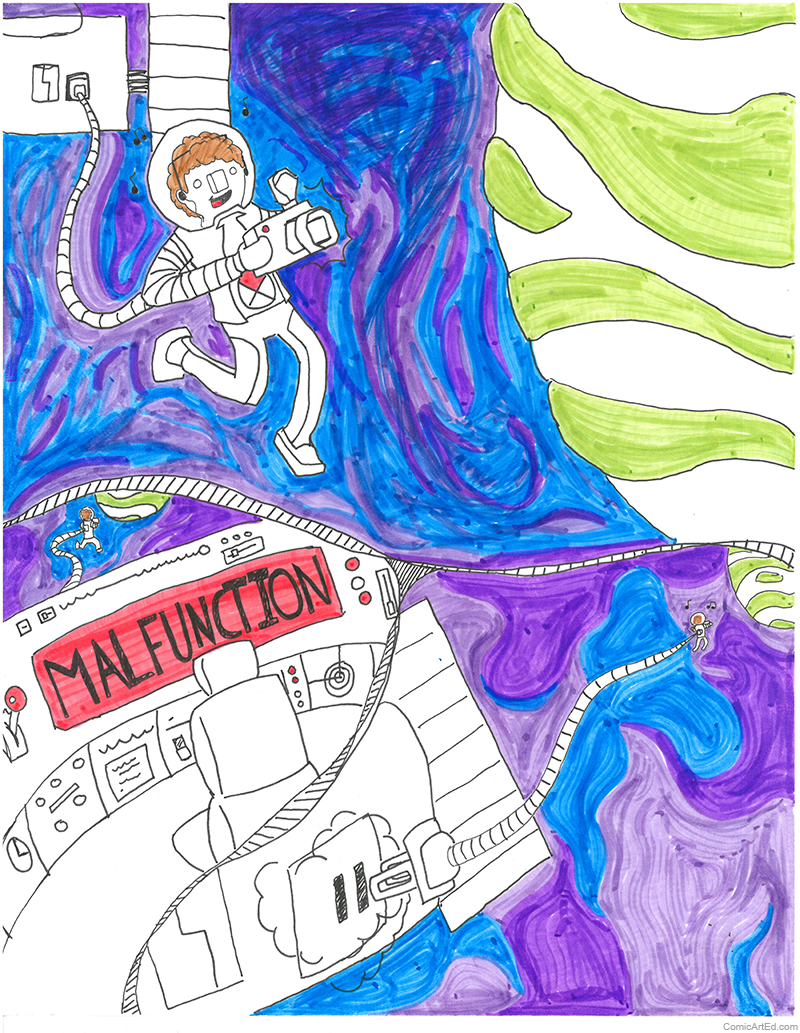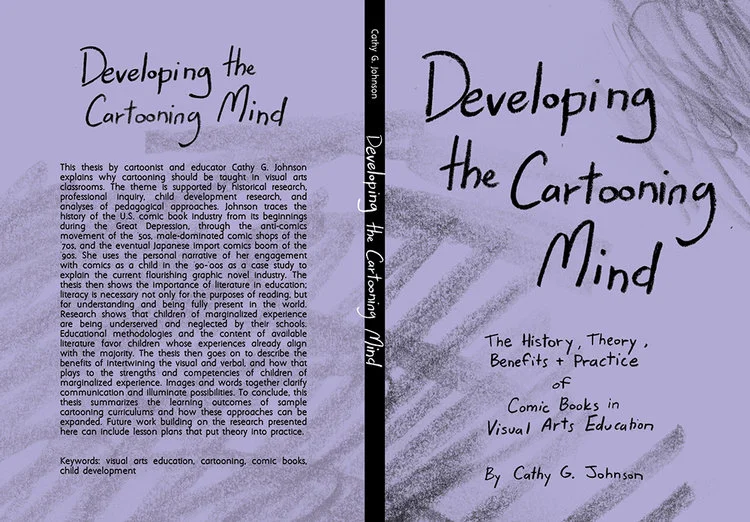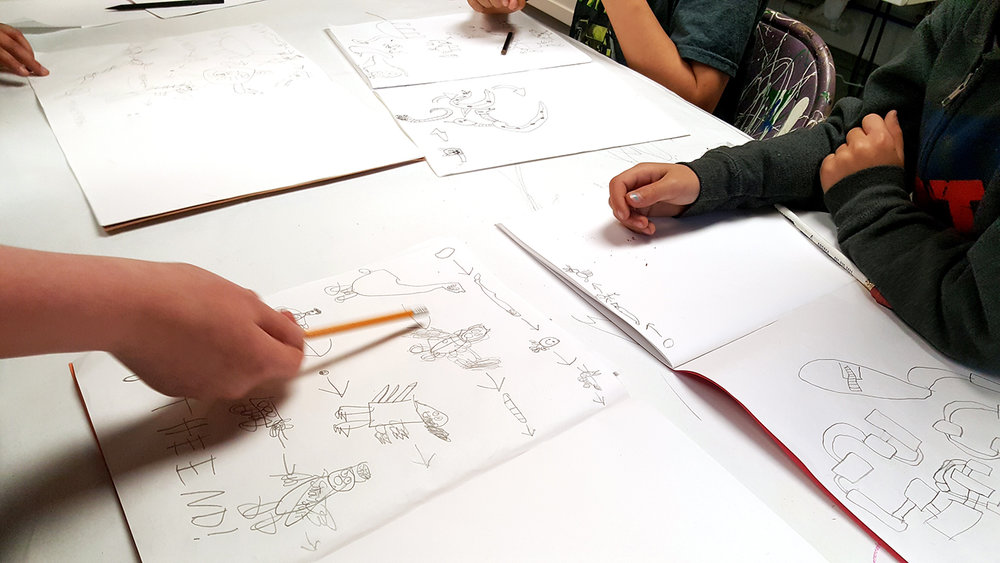Education
Bringing comics into the classroom.
Education
A collection of my educational work to serve as documentation and a resource.
The Freedom to Read legislation has passed in the state of Rhode Island! Back in March I had the pleasure of speaking at a press conference in support of passing the bill.
I am proud to share that I will be the keynote speaker at the Rhode Island Library Association Conference 2025! My speech is titled “Comic Books are Liberation!,” and I’ll be addressing the incredible power of teaching comic book making to children.
Last year I had the pleasure of teaching a 4 week-long comic drawing workshop series at the Providence Public Library, and I’m so happy to be returning again this year!
Art education is a liberatory practice. When I teach, I want my students to discover. Through their art materials, students are observing, deeply engaging with the world around them. My students are documenting every detail of their subject, to ultimately know the world on an intimate level. Creating is a living memory, chronicling our past with breathing images.
For the second year, I had the pleasure of teaching a wonderful group of grad students in Boston University’s new Visual Narrative MFA program! This year I taught Thesis and Concept Studio courses, so we worked together all year developing final thesis projects.
I recently spoke at a press conference in the Rhode Island statehouse to lend my voice in support of the Authors Against Book Bans Rhode Island chapter and the new legislation for the Freedom to Read in Rhode Island.
Thank you so much to the wonderful East Greenwich Free Library for having me visit! We had a very fun teen comic making workshop for ages 12-18. All students were so creative and dedicated!
I will be teaching two 4-week long workshop series aimed at guiding Rhode Island teenagers through the development, writing and drawing of their own comic book stories. These workshops were developed in collaboration with Write RI and School One in Providence, Rhode Island, and will be taught both virtually and in-person. Students are invited to submit their final comic stories in a contest to be collected and printed into a state-wide anthology.
Dear Comic Student, it’s time. You are arriving at your final semester of comics school. Maybe you spent all winter break working on your comic. Or maybe you meant to, and it didn’t happen. Maybe you actually did do a lot of work and it just doesn’t feel like it. Maybe it feels like you should have gotten more work done than you did. Or maybe, maybe you really did do nothing. Maybe you slept in very late, everyday. You played video games. You watched a lot of TikToks. But what this accomplished was rest. You have rested. You have filled your gas tank. And now it’s time to really get started.
I have had the pleasure of teaching a wonderful group of grad students this year in Boston University’s new Visual Narrative MFA program! The upcoming book talks are free and open to the public, so I hope you consider coming down and supporting the hard work all these incredible students achieved!
In this all-ages workshop, students will have the opportunity to brainstorm their own superhero identity, design a symbol, then create a simple cardboard + paper costume.
I love libraries! I’ve been very lucky to get invited to a few recently to do author visits and comic drawing workshops. Here are a few photos and graphics from those events! We had a really wonderful time and I can’t wait to come back.
Very honored to share that I have been published in a textbook! I wrote a chapter for Teaching with Comics, edited by Robert Aman and Lars Wallner, published by Palgrave Macmillan. My chapter is titled "Comic Art Ed: Making Comics Is for Everyone!" discussing the pedagogical values of kids drawing comics. Much of this chapter is an expansion of work shared on this very website! I am so thankful to Lars and Robert for including me.
I was recently invited by the Grafton Public Library in Massachusetts to teach a Teen Zine Workshop. It was so much fun! Description of Workshop: Learn about the history of zines and then create your own! From political activism, fan comics, to punk rock and Star Trek, you can make a zine about almost anything!
Here is a fun comic art activity that gets students thinking and sharing about their past, present and future! I created this project for my art enrichment after school students. I wanted students to think about their goals and their future, particularly with a hopeful attitude, since the pandemic has been harsh and difficult on developing kids.
I have been conducting virtual comics making workshops, which have been so much fun! So much of their success has been thanks to the collaboration with amazing libraries, and the thoughtful and goofy ideas from kids.
This summer I decided to take the plunge and put together a classroom comics library. It has been amazingly successful! Here is what I learned, and how you can do it, too!
“Where do ideas come from?” Ideation is something that can stump many art students. We never want to tell students what they should make! On the flip side, doodling is spontaneous, free, and unrestrained drawing. Every student, no matter their artistic skill or background, can doodle. How can the power of doodling be harnessed to help students create, develop, and feel confident in their original ideas?
It is deeply important for us to be engaging with children of all ages in topics that have to do with LGBTQQIA people. In this post, I am going to offer my thoughts on why it is appropriate for all ages and how we can approach the subject with young people in our life.
Feelings Faces, an Elementary Social-Emotional Arts Activity. The idea of this activity was to use the facial expression of cartooning to help build students' empathy, and to create tangible images for their intangible feelings.
6-Panel Stories, a Collaborative Comic Art Activity. At a local middle school, I had the pleasure of teaching a 5-week after school comics club. In this activity, students each have the opportunity to contribute to a 6-panel comic story.
Figure drawing is a well-known art exercise for students of all ages, and can be approached in many different ways. The excitement and joy of cartooning is not the precision of drawing, but the communication through marks and forms. Therefore, my approach to figure drawing with my students is not about capturing the perfect form, but instead capturing the emotion that the figure is conveying.
When teaching in an art classroom with younger kids, maintaining a positive and inclusive environment can be tricky. Children can spend a large portion of their time growing up in mainstream settings...
Hello! Earlier this month I earned my masters degree from the Rhode Island School of Design. I was in the Teaching + Learning in Art + Design department, where I completed by thesis...
Every Spring Break I get to teach a one-day workshop with students ages 6-13. This community center time is a great opportunity for students to explore creativity outside of school hours....
Activity Videos
Lesson Plans:
In this all-ages workshop, students will have the opportunity to brainstorm their own superhero identity, design a symbol, then create a simple cardboard + paper costume.
Here is a fun comic art activity that gets students thinking and sharing about their past, present and future! I created this project for my art enrichment after school students. I wanted students to think about their goals and their future, particularly with a hopeful attitude, since the pandemic has been harsh and difficult on developing kids.
“Where do ideas come from?” Ideation is something that can stump many art students. We never want to tell students what they should make! On the flip side, doodling is spontaneous, free, and unrestrained drawing. Every student, no matter their artistic skill or background, can doodle. How can the power of doodling be harnessed to help students create, develop, and feel confident in their original ideas?
Feelings Faces, an Elementary Social-Emotional Arts Activity. The idea of this activity was to use the facial expression of cartooning to help build students' empathy, and to create tangible images for their intangible feelings.
6-Panel Stories, a Collaborative Comic Art Activity. At a local middle school, I had the pleasure of teaching a 5-week after school comics club. In this activity, students each have the opportunity to contribute to a 6-panel comic story.
Figure drawing is a well-known art exercise for students of all ages, and can be approached in many different ways. The excitement and joy of cartooning is not the precision of drawing, but the communication through marks and forms. Therefore, my approach to figure drawing with my students is not about capturing the perfect form, but instead capturing the emotion that the figure is conveying.













